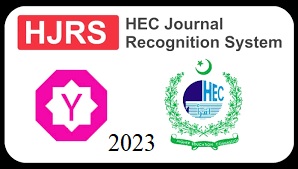Extraction, formulation and evaluation of fast dissolving oral films of nicotine for smoking cessation
DOI:
https://doi.org/10.56770/jcp201801Keywords:
Fast dissolving oral thin films, Patient compliance, Hydrophilic Polymer, Nicotine round films, Smoking cessationAbstract
To produce oral films of nicotine in a laboratory setting to aid smokers in smoking cessation. Nicotine is a highly addictive drug and many people suffer from its addiction around the globe in the form of smoking. This problem is particularly pronounced in Pakistan and many smokers here do not have access to cessation medications. To prevent smokers from inhaling harmful chemicals like tar, carbon mono oxide and carcinogenic compounds produced from burning vegetable matter, pharmaceutical nicotine is used in the form of chewing gums, TDDS patches and oral films. The oral route is one of the most popular routes of drug administration because of its low cost, easy administration and a high rate of patient compliance. Many patients especially geriatric and paediatric ones have dysphagia or have some level of unease when swallowing hard gelatine capsules or solid tablets. This has led to the development of fast dissolving oral films. Fast dissolving oral thin-films are useful in patients such as paediatric, bedridden or developmentally disabled, geriatric patients, many of whom face difficulty in swallowing tablets or hard gelatine capsules. Oral fast dissolving films are a novel dosage form in which a thin film is prepared using hydrophilic polymers, which rapidly disintegrates or dissolves on the tongue or in the buccal cavity. Oral films are an alternative platform for molecules that undergo high first pass metabolism. Method: The method used here to prepare fast dissolving oral films is the solvent casting method. This method is fast, reliable, and extremely feasible in a laboratory setting. This simple method involves dissolving the ingredients to make a homogeneous solution and casting the said solution in a suitable container in order to produce oral films. Results: Using this method structurally sound films were obtained. These films were then tested; employing various parameters for this task. The results obtained hence thereof were sufficiently satisfying. Conclusion: The solvent casting method is a pragmatic and suitable approach to producing standard quality films in a laboratory. The concentrations of the polymer and the plasticizer may need to be adjusted according to the active pharmaceutical ingredient.
Downloads
Published
How to Cite
Issue
Section
License
Copyright (c) 2018 The authors retain the copyright without restriction.

This work is licensed under a Creative Commons Attribution 4.0 International License.









